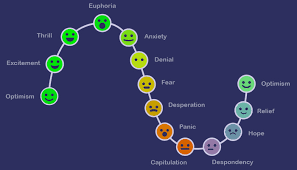Introduction:
In the world of trading, staying ahead of the game requires knowledge and understanding of various market indices. One such popular index that investors and traders often come across is the Global Market Index (GMI). In this article, we will delve into what GMI actually is and how it plays a crucial role in the trading world.
Understanding GMI:
The Global Market Index (GMI) is a weighted index that provides an overall snapshot of the global stock market trends. It encompasses various regional and national stock indices, capturing the performance of major stock markets worldwide. GMI helps traders and investors track the direction of the global equity market and make informed investment decisions.
Components of GMI:
GMI comprises numerous underlying indices, representing stocks from different countries or regions. These indices can include renowned benchmarks such as the S&P 500, FTSE 100, Nikkei 225, and more. By combining these indices, GMI offers a comprehensive view of global market performance, allowing professionals to gauge market trends on a global scale.
Significance of GMI:
GMI plays a pivotal role in providing insights into broader market movements and their impacts on individual stocks and sectors. It helps traders and investors identify correlations between different markets and anticipate potential trends. Moreover, GMI acts as a benchmark for portfolio managers, aiding them in evaluating their investment strategies against global market performance.
Tracking GMI:
To keep track of GMI, traders and investors can refer to financial news platforms, market data providers, specialized trading software, or brokerage platforms. These sources regularly update GMI values, allowing individuals to monitor global market conditions and make timely decisions based on the current trend.
Benefits of GMI in Trading:
- Global Perspective: GMI offers a comprehensive overview of global equity markets, enabling traders to identify emerging trends and opportunities beyond their local markets.
- Risk Management: By monitoring GMI, traders can assess the overall market sentiment and adjust their risk exposure accordingly, aiding in mitigating potential losses.
- Diversification: GMI assists in diversifying investments across different countries and regions, reducing concentrated risks.
- Investment Strategy: GMI serves as a reference point for evaluating the performance of investment portfolios and determining portfolio rebalancing requirements.
Conclusion:
GMI acts as a key tool for traders and investors aiming to gain a deeper understanding of global market trends. By tracking GMI, traders can make informed investment decisions, manage risks effectively, and optimize their portfolio strategies. Keeping an eye on this global market index can be highly valuable in today’s interconnected world of trading.

